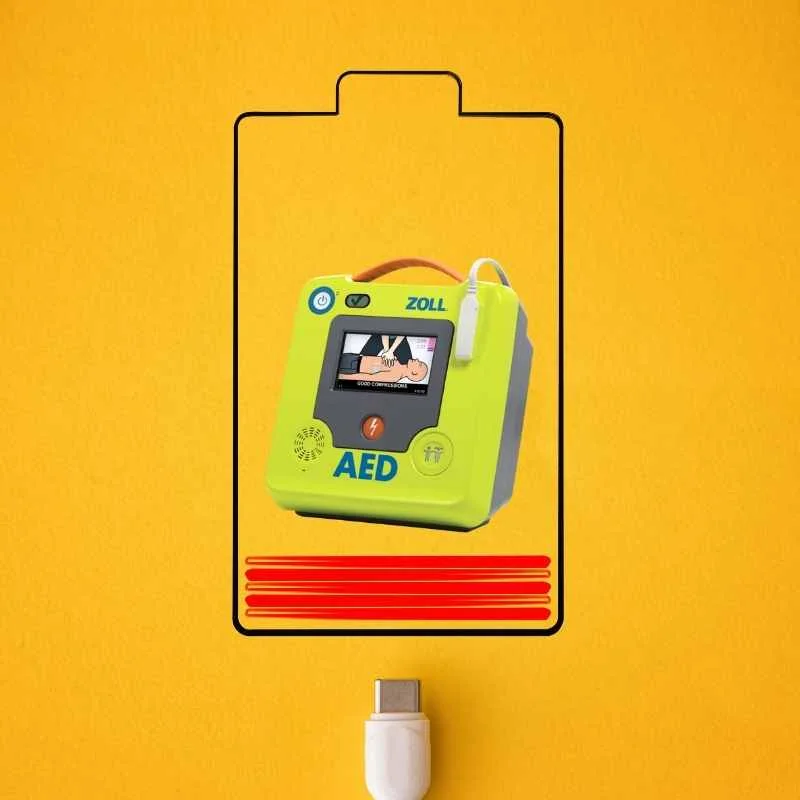
No: One of the most critical requirements for an Defibrillator (AED) is that it simply works when needed in a sudden cardiac emergency. There’s no time to fuss with charging or unreliable batteries when someone’s life is on the line.
That’s why modern AEDs are designed with simple, reliable battery systems that don’t require any manual charging or maintenance by users. They utilize long-lasting lithium batteries intended for a single use.
The Benefits of Non-Rechargeable AED Batteries
AEDs found in public places like offices, schools, airports etc. rely on non-rechargeable lithium batteries for several important reasons:
- Always Ready for Use With a non-rechargeable battery, the AED is always armed and ready to operate at maximum power during a cardiac emergency. There’s no risk of the battery being uncharged or losing power capacity from repeatedly charging/discharging over time.
- Simple to Maintain By using a sealed lithium battery intended for one-time use, there’s no need to worry about recharging schedules or battery maintenance procedures. As long as the battery is replaced when used or before its expiration date, the AED will be operational.
- Maximum Shelf Life The lithium battery cells used in AEDs have an incredibly long shelf life of 4+ years. (This stunner even has a 7 year standby) when left untouched. This ensures the battery will be fresh and highly reliable if called into use at any point during that span.
Why Rechargeable AED Batteries Are Disfavoured
While rechargeable battery packs may seem convenient, they are not well-suited for powering life-saving defibrillators:
- Rechargeable batteries degrade with every charge/discharge cycle, leading to shorter lifetimes and unpredictable capacities over time
- If not religiously recharged on a schedule, they can be uncharged or drained when needed in an emergency
- Charging systems add complexity, cost, and potential points of failure to the AED design
For safety-critical devices like AEDs that may sit for months or years between uses, a simple and reliable one-time battery is significantly preferred.
Changing AED Batteries Is Important
Of course, AED owners and facilities managers need to properly follow the manufacturer’s guidelines for routine battery replacement on a set schedule, typically every 4 years.
However, this simple swap of a sealed lithium battery is far easier than recharging and capacity testing a rechargeable pack. And it provides maximum assurance that the AED will be ready to deliver its full rated charge when called into use.
To understand more about the operating principles and technology behind AEDs, read our in-depth guide Understanding Defibrillator Function and use here on DDI Safety.
